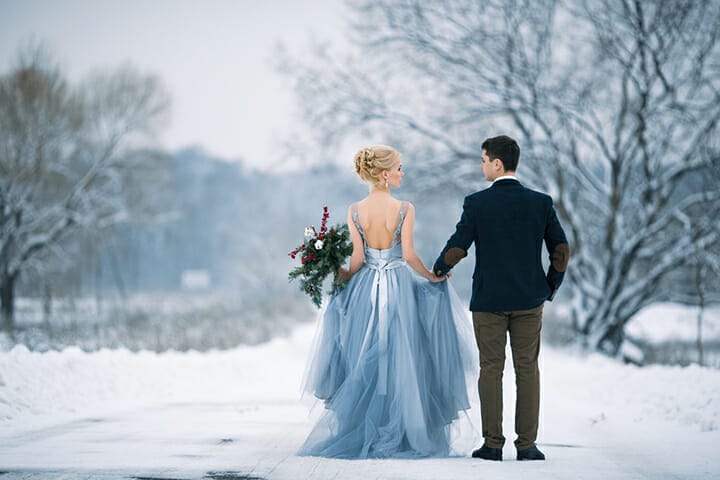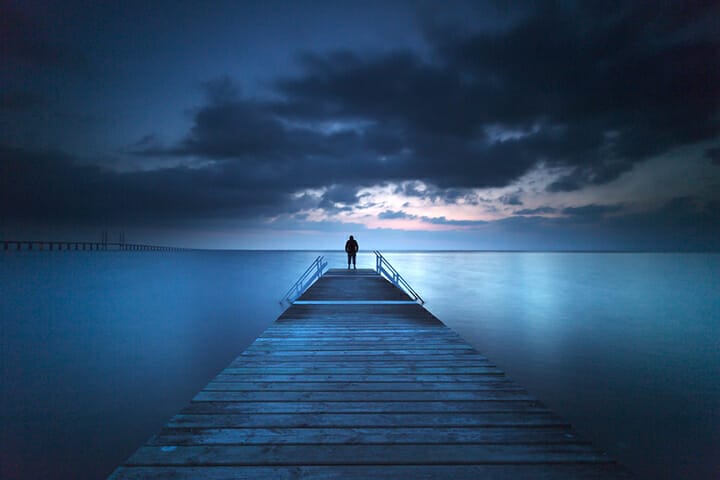Negative space is the area surrounding the main subject in a photograph which is left unoccupied. Put simply, it is the space around the object itself that helps define the positive space (or main focus). When used creatively together, negative and positive space can communicate the composition of your photograph.
Using negative space is an easy way to create beautiful, minimalist photographs that hold dramatic impact. Having large spans of empty space can really draw the viewer into the main subject of your image whilst continually holding strong emotion.
The human eye is designed to see reality in 3D, through two eyes, the camera, on the other hand, is manufactured differently. As you all know, a camera sees in 2D through a single lens, this is why there is often a difference between the way you see a composition and the way that the camera perceives it.
It is for this reason that negative space is so important. It allows us to truly consider our composition, and how the camera will see it.

Negative space surrounding your main subject can portray a sense of scale/size to the viewer. This can be useful if you’re a landscape photographer as shooting subjects close up can take away the feel of the location from the audience.
Stepping back from the edge of your shot can often have more impact to the image than it would if you were to be right in the action. The further back you are from your subject, the smaller they would appear, achieving a greater atmosphere, with a completely different ambiance.
When framing your composition, be sure not to include any distracting features, as this can deter from the poignant message that you are trying to send.

Negative space can work in the opposite way in terms of scale, to make a subject appear larger than it actually is. Exaggerating negative space around your subjects can create some interesting forms and illusions. Shooting with a wide aperture (small F/number) can make this technique much easier to accomplish.
Take flowers for example. It is up to you as the photographer whether you want to preserve the subject in its original context (in the plant) or if you want to shoot with a high amount of negative space, making the flower head appear isolated.
An out of focus, green background can be pleasing in flower photography as it is what you would expect to see. However, at iPhotography we encourage our members to develop their own style. Be sure, in both cases, that there are no distracting elements in the background as this can take the simplicity out of the shot.

There are many composition techniques that can be used to draw attention to the main subject, for example, is framing your photograph. By using negative space to frame your image, you are removing any distracting elements from the photograph, and therefore your subject will stand out.
This technique can work particularly well at the beach as the sky, sand and sea provide a perfectly undistracted composition in which you can create any story.
Your subject holds the power of the photograph with the help of being emphasised by negative space.
Decluttering your composition will make the subject stand out more and your shot more captivating than if they were against a busy background. Remember to consider the rule of thirds when shooting very minimal shots; it is important that your main subject is always the centre of attention.

Negative space is something that all of you will include in your photography, probably without even realising it. It holds such an important factor into what makes your image successful.
Photographers often believe that their image has to be interesting in every pixel. however, this is not entirely the case. Sometimes, it is what isn’t in the picture rather than what is.
Discover the BEST way on how to clean a camera sensor using swaps, rocket blowers and pencil brushes to give your shots a dust-free finish!
Capture the magic of the night with our beginner’s guide to night photography. Learn tips and techniques for stunning results.
Master the art of solar eclipse photography with expert tips on equipment, settings, and precautions for stunning celestial images.
Learn the basics of photography – fast – with our FREE 60-Second Photographer online course. Each class is short and sharp with simple, actionable steps that give you immediate results.
x 30 lessons

© iPhotography™
Become a confident and competent photographer in less than 30 minutes!
Before you leave, make sure you’ve secured your FREE online photography course (worth £29.99)
Each class is just 60-seconds or less making it the fastest and easiest way to learn photography!